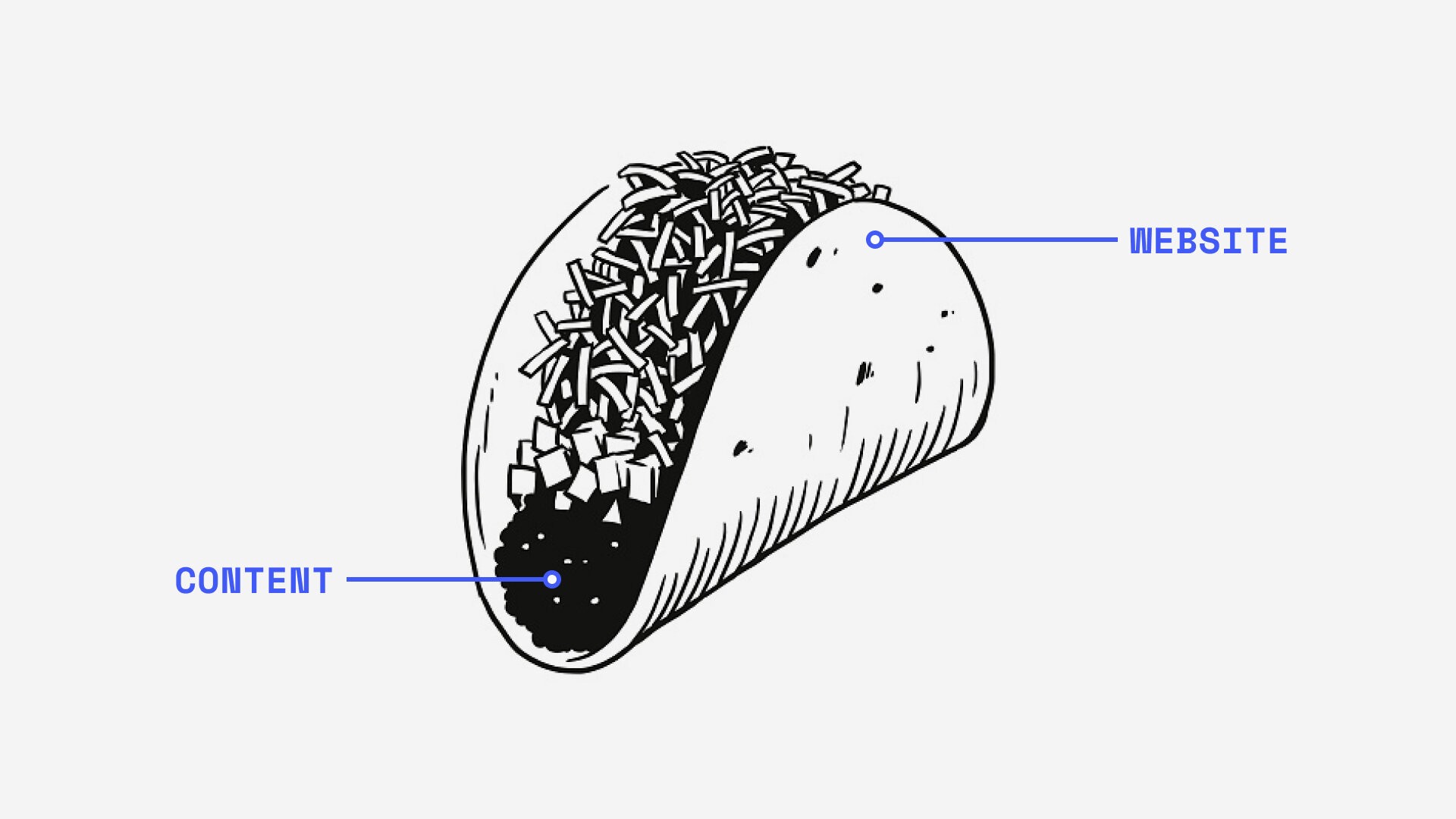Pixels to Product: How to Write (and Get Hired) as a Designer (Part 2)

Here’s part two of our series on designing and maintaining an effective portfolio. In our first essay, we explored the journey of simplifying a portfolio design. Now, we’ll delve into the crucial role of writing and storytelling in design portfolios, and how these skills set you apart in the job market.
You’re about to create your design portfolio. You have two paths before you:
The visual showcase: A collection of your best exported images, demonstrating your command of the latest design trends. Perhaps there’s a paragraph or two for context.
The narrative journey: While still visually appealing, this approach is rich in storytelling. It offers insights into your design rationale, starting with problem framing, moving through hypotheses and solution shaping, and concluding with outcomes and reflections.
The first option, while visually striking, lacks depth. The second invites the viewer on a journey, revealing your thought process as a designer. It’s a testament to the impact of storytelling in design, showing that what truly resonates is not just what we see, but the stories behind our work.
Why writing matters in design

Created with DreamStudio
During a pivotal phase in my career, I found myself tasked with hiring a new product designer. As applications and portfolios flooded in, I realised — it wasn’t the polished designs that caught my attention, but the stories they told. I was drawn to portfolios that showcased:
Thinking: Evidence of introspection and deep understanding.
Problem-solving: The ability to simplify complex challenges.
Planning: A methodical approach, clear from well-structured headings.
Communication: The skill to articulate what truly matters.
Conversely, immediate turn-offs included:
CVs focusing on tasks rather than impactful results.
Portfolios that were all style, no substance — missing the ‘why’ behind the design decisions.
For candidates who caught my eye, I looked for:
Outcome focus: Prioritising product impact over pure aesthetics.
Systems thinking: A structured approach to tackling design challenges.
Narrative flair: The ability to weave the problem-solution journey into a concise, compelling story.
This experience reinforced a tough lesson: in the realm of product design, and perhaps in life, the clarity and depth of our narratives often outweigh outward appearances.
Practical tips for better design writing
Understanding the ‘why’ and ‘how’ of integrating narrative into design is one thing, but putting it into practice is another. Here are some actionable steps that have significantly improved my work across various formats, from product documentation and design presentations to messages and UI copywriting:
Just start: Writing clarifies thinking. The more you write, the clearer your thoughts become.
Read widely and deeply: Learn from your favourite authors. Analyse what makes their writing compelling and practice those techniques.
Know your audience: Tailor your writing to the needs, expectations, and comprehension level of your intended readers.
Simplify: Avoid c̶o̶n̶v̶o̶l̶u̶t̶e̶d̶ ̶v̶e̶r̶b̶o̶s̶i̶t̶y̶ complex jargon. Aim for clarity and simplicity, as if explaining ideas to a friend.
Organise thoughts: Structure your content with well-planned headings and subheadings. This guides the reader through your ideas step by step.
Be direct: Avoid leaving your readers guessing. Be precise and clear in your messages.
Explore variations: Just as with design, drafting variations with different tones, styles, and lengths can reveal the most effective way to communicate a point.
Cut, cut, cut: Keep an eye out for and eliminate any unnecessary fluff. This is especially crucial in UI copywriting, where brevity is key.
Edit, edit, edit: Embrace the editing process. The first draft is just the start; refining your words sharpens your message.
Learning from design writers
While developing your own writing style is crucial, drawing inspiration from established product & design writers can significantly accelerate your growth. Here are some renown figures whose work exemplifies excellent writing:
Julie Zhuo: Excels at translating complex design leadership concepts into accessible, practical advice.
Paul Graham: Masters the art of using simple language to explore deep, often counterintuitive ideas about technology and design.
Lenny Rachitsky: Skilfully breaks down product strategy and growth concepts into actionable advice, continually learning from world-class product leaders.
Frank Chimero: Crafts thoughtful, philosophical pieces that challenge designers to think deeper about their practice.
These writers demonstrate how clear, insightful writing can establish one as a thought leader in the design community. By studying their work, you can learn to articulate complex design concepts, gain new perspectives on challenges, and understand how to build a personal brand through writing. And, perhaps the biggest lesson of all — they have continually honed their writing for over a decade, some far longer.
Remember, the goal isn’t to imitate these writers, but to learn from their strengths and find your own unique voice in the design conversation.
Designing with words

Created with DreamStudio
Some have argued that writing shouldn’t be a priority in design roles. Yet, I’ve found that blending writing with design is not just beneficial; it’s crucial. In the fast-moving fields of design and technology, being able to think, strategise, and articulate ideas is as important as the design itself.
In choosing between a seasoned designer with an eye-catching portfolio versus a novice who clearly articulated their thought process, I’ve consistently leaned towards the latter. The ability to think on your feet and make well-reasoned decisions quickly is invaluable in our rapidly evolving industry. UI design and visual tastes can be learned in time, but finding someone who just gets it when it comes to product thinking and best practices is insanely valuable.
My experience hiring for our design team illustrates this point. Candidates who came from diverse backgrounds like industrial engineering or business development, and could articulate their approach to problem-solving and their understanding of systems, stood out. They weren’t just designers; they were thinkers and communicators. This ability to explain their methodologies, learning, and thought processes — both verbally and in writing — was what set them apart.
Moreover, the most insightful colleagues I’ve worked with, across all domains, share a common trait: they write. Whether on Medium, Substack, or personal blogs, their written work reflects deep thinking and expertise.
The impact of clear communication
In a space where every outcome is measured and results are expected at set intervals — great visual or UI design is a minimum requirement, not an advantage. We’ve seen it play out in so many cases — hiring, team processes, design cycles, user experience — true impact in design doesn’t come from pixel perfection, but from the capacity to think critically, adapt, and communicate clearly.
Looking ahead
As we conclude this exploration of writing in design, remember that your ability to articulate your process, decisions, and impact can set you apart in a competitive field. In our next and final part of this series, we’ll discuss how to scale your portfolio as your career evolves, building on the foundations of simplicity and effective storytelling we’ve covered so far.
Writing in design is more than just a skill — it’s a powerful tool for thinking, problem-solving, and career advancement. By honing your writing abilities alongside your design skills, you’re not just creating a portfolio; you’re crafting a compelling narrative of your professional journey.



